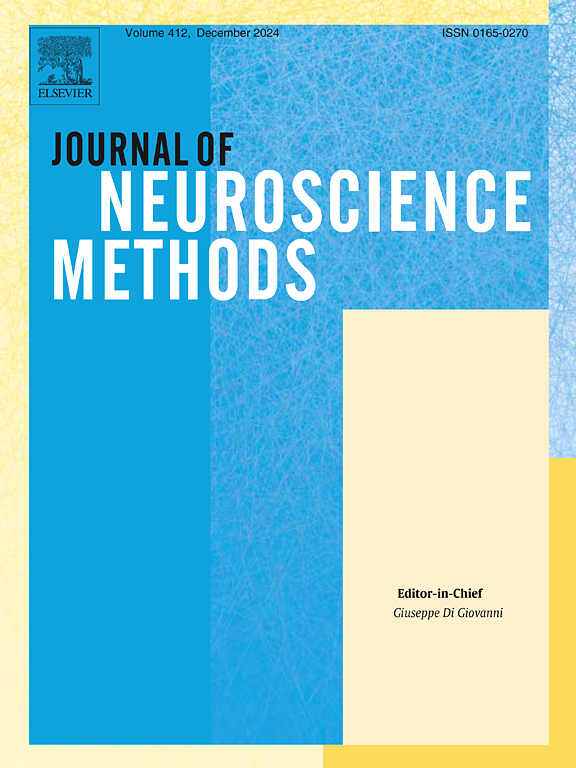Multi-layer transfer learning algorithm based on improved common spatial pattern for brain–computer interfaces
IF 2.7
4区 医学
Q2 BIOCHEMICAL RESEARCH METHODS
引用次数: 0
Abstract
In the application of brain–computer interface, the differences in imaging methods and brain structure between subjects hinder the effectiveness of decoding algorithms when applied on different subjects. Transfer learning has been designed to solve this problem. There have been many applications of transfer learning in motor imagery (MI), however the effectiveness is still limited due to the inconsistent domain alignment, lack of prominent data features and allocation of weights in trails. In this paper, a Multi-layer transfer learning algorithm based on improved Common Spatial Patterns (MTICSP) was proposed to solve these problems. Firstly, the source domain data and target domain data were aligned by Target Alignment (TA)method to reduce distribution differences between subjects. Secondly, the mean covariance matrix of the two classes was re-weighted by calculating the distance between the covariance matrix of each trial in the source domain and the target domain. Thirdly, the improved Common Spatial Patterns (CSP) by introducing regularization coefficient was proposed to further reduce the difference between source domain and target domain to extract features. Finally, the feature blocks of the source domain and target domain were aligned again by Joint Distribution Adaptation (JDA) method. Experiments on two public datasets in two transfer paradigms multi-source to single-target (MTS) and single-source to single-target (STS) verified the effectiveness of our proposed method. The MTS and STS in the 5-person dataset were 80.21% and 77.58%, respectively, and 80.10% and 73.91%, respectively, in the 9-person dataset. Experimental results also showed that the proposed algorithm was superior to other state-of-the-art algorithms. In addition, the generalization ability of our algorithm MTICSP was validated on the fatigue EEG dataset collected by ourselves, and obtained 94.83% and 87.41% accuracy in MTS and STS experiments respectively. The proposed method combines improved CSP with transfer learning to extract the features of source and target domains effectively, providing a new method for combining transfer learning with motor imagination.
基于改进公共空间模式的脑机接口多层迁移学习算法。
在脑机接口的应用中,被试之间成像方式和脑结构的差异影响了解码算法在不同被试上的有效性。迁移学习就是为了解决这个问题而设计的。迁移学习在运动图像(MI)中有很多应用,但由于域对齐不一致、缺乏突出的数据特征和轨迹权重分配等问题,迁移学习的有效性仍然受到限制。本文提出了一种基于改进公共空间模式(MTICSP)的多层迁移学习算法。首先,采用目标对齐(target Alignment, TA)方法对源域数据和目标域数据进行对齐,减小受试者之间的分布差异;其次,通过计算源域和目标域各试验的协方差矩阵之间的距离,对两类的均值协方差矩阵进行重新加权;第三,通过引入正则化系数,提出改进的公共空间模式(Common Spatial Patterns, CSP),进一步减小源域与目标域之间的差异,提取特征;最后,采用联合分布自适应(JDA)方法对源域和目标域的特征块进行重新对齐。在多源到单目标(MTS)和单源到单目标(STS)两种迁移模式下的两个公共数据集上的实验验证了我们所提出方法的有效性。5人数据集的MTS和STS分别为80.21%和77.58%,9人数据集的MTS和STS分别为80.10%和73.91%。实验结果表明,该算法优于其他先进算法。在自行采集的疲劳脑电数据集上验证了算法MTICSP的泛化能力,在MTS和STS实验中分别获得了94.83%和87.41%的准确率。该方法将改进的CSP与迁移学习相结合,有效地提取了源域和目标域的特征,为迁移学习与运动想象相结合提供了一种新的方法。
本文章由计算机程序翻译,如有差异,请以英文原文为准。
求助全文
约1分钟内获得全文
求助全文
来源期刊

Journal of Neuroscience Methods
医学-神经科学
CiteScore
7.10
自引率
3.30%
发文量
226
审稿时长
52 days
期刊介绍:
The Journal of Neuroscience Methods publishes papers that describe new methods that are specifically for neuroscience research conducted in invertebrates, vertebrates or in man. Major methodological improvements or important refinements of established neuroscience methods are also considered for publication. The Journal''s Scope includes all aspects of contemporary neuroscience research, including anatomical, behavioural, biochemical, cellular, computational, molecular, invasive and non-invasive imaging, optogenetic, and physiological research investigations.
 求助内容:
求助内容: 应助结果提醒方式:
应助结果提醒方式:


